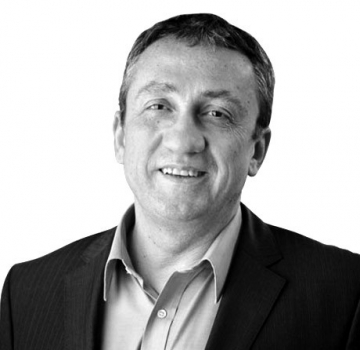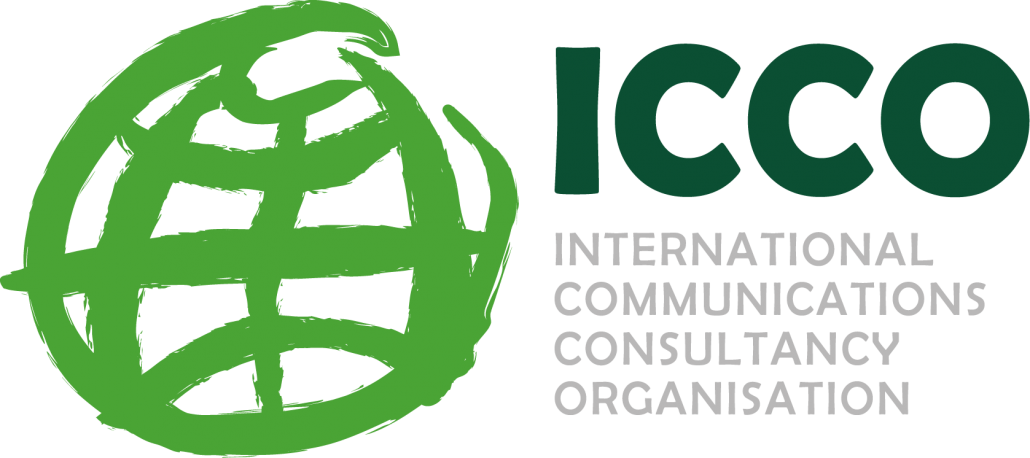Fleishman-Hillard CEO Dave Senay shared a similar vision: reinvention is not an option, when most of the dominant agency structures reflect the past, not the future – not even our present: how many PR agencies can claim today that they have a truly holistic approach to business, a really diverse and social savvy talent pool, a best-in-class Analytics, Research & Insights resource, a 24/7 Newsroom and a genuinely Content-Centric value proposition?
Meanwhile, our clients run fast, and they do expect timely, useful, relevant, 360°, effective solutions, not internal revenue conflicts between silos and endless channels’ debates. Who can seriously believe that a consumer bothers whether a message comes to him through a “earned”, “owned” or “paid” media? Really?
Transformation is not an easy task though, in our industry like in most sectors: people are, too often, change adverse. And the talent part of it is essential, though. Mobilizing people is of the essence. Training, coaching and Change Management should therefore be at the core of our investments in the two of three years to come.
Another fight is on the compensation front: as Cook highlighted it,
“We are about insights and ideas, that’s the kind of company we want to be in the future (but) our clients are used to be paying for our hours!”
Data analytics, market research, insights generation, Brand & Reputation Management, focus on Social Enterprise and Social Media should be our top delivery, and the value we thus create properly compensated.
Think DIVERSE
Is the PR Industry “A Man’s Man’s Man’s World”? Yes it still is, very sadly.
Gender inequity remains a painful reality, a disgrace and a true concern for our sector. Speaking about “Women in PR”,
APCO Worldwide CEO Margery Kraus revealed that 73% of the PRSA’s 21,000 members are women, but that four out of five leadership positions are still held by men. As of 2010, the average income for women in PR is 60% of men’s average, and it was 69% in 2006. So it’s getting even worse. Just a shame. Still a long, long way to go….
The industry urgently needs to work on this. And a specific effort is also to be done on women’s own attitude towards the male-chauvinist dominant culture in society at large. “Women need to have each other’s backs, we have to coach women to reach out for help when they face challenges and have doubts”, said
Porter Novelli CEO Karen van Bergen. A perspective Margery Kraus brightly echoed, quoting Eleanor Roosevelt:
“Nobody can make you feel inferior without your consent”.
From a broader perspective, van Bergen insisted on the fact that there was still a lot to do, in order to break through the “glass ceiling”: clearly for women, and also for the so-called “minorities”.
Karen insisted that the crisis of diversity is not “just” a personal issue: it’s clearly an industry issue: “Diverse teams come up with better solutions, solutions that resonate with diverse audiences”. So her message to the business is: “Embrace diversity like your future depends on it – Because it does!”.
Interestingly, several participants underlined the fact that diversity is not only an issue to be aggressively addressed by our organizations: it should also be considered a great opportunity. The debate went beyond inequities in terms of gender and origins, to focus on the question of efficiency: diversity is also about enlarging angles of vision, perspectives, points of views.
The consequence is that we need to start recruiting differently, attracting and retaining the diverse talent of the future.Rethink the way we recruit our people and hang on to them. Endogamic recruitment (searching the same profiles, with the same skills, coming from the same schools) is a deadly route, nowadays.
Yes, PR need brains, but different kinds of brains, coming from very diverse horizons, cultures, backgrounds.
Think SMART.
Innovation in PR was another insightful debate, introduced by
Text 100‘s Cecile Missildine: the golden rule today is audience-led communications, with content and conversational strategies which have to be built upon a deep understanding of people and communities. Content + Communities + Contact: a vision we definitely share at MSLGROUP!
Cecile said it was somehow worrying to see that so many brands and CMOs still rely on the old marketing funnel, born in the sixties with the blooming of the consumer society: yes it is still out there! People’s attitudes and behaviors have changed and keep changing a lot, though…The decision-making journey is actually very different, and the challenge is to manage it rightly.
Language strategies are equally crucial here, and
Maslansky + Partners CEO Keith Yazmir showed it with talent, starting from something we all know, or should know, but don’t truly understand: it’s not what you say, it’s what they hear which actually counts. Another point we fully share at MSLGROUP, having put what we call the art & science of conversation at the heart of our people-centric Brand Essence.
Be heard is the difficult part of it, and if we’re not good at that the risk of disconnection between brands and people will grow very fast.
It’s all about understanding the message you are getting behind the words you’re hearing. Too many messages are still rooted in what you want to say, not what the audience will actually hear: the dialogue gap.
Innovation in PR is also embedded into the Science of Engagement, as
Weber Shandwick’s Adam Mack rightly showed it.Yes, the traditional model of research is changing fast, with the Big Data turmoil, the need for insights, the focus on field observation…all leading to better, “bigger” and smarter ideas.
Neurosciences, Psychology, Anthropology, Sociology, Semiotics are now supporting the new Science of Engagement, and it makes a big difference (we could see good examples of this too during the
Holmes Global PR Summit last November in Miami). Never has our industry been in such a need of Social & Human Sciences, and it’s very good news!
Understanding that the contemporary drivers of engagement are very diverse, and numerous, is essential: it’s a complex and fast-evolving field and we should never forget that “We’re still cavemen at heart”! This is why engaging at the same time, but in different ways, the thinker AND the caveman in each of us is the key to successful campaigns.
WEF‘s Diana El-Azar demonstrated why the effects of the Social Revolution are – unfortunately – still poorly integrated in our conceptual and operational models. We need to keep in mind that disintermediation is affecting and putting upside down each and every sector of society – including our industry.
If we do not understand that leadership today is about dealing with transparency, velocity, empowerment and complexity, we’re not going to help our clients navigate the blur.
Think BOLD
Last, but not least, lots of insights and ideas were shared on two separate – but highly connected – topics: creativity in PR, and award-winning strategies.
What is creativity in PR?
Well, 50% of our clients spending less than 5% of their budget on creation, it’s not necessarily something clients value the way we do…In such a context, we need to be very good at managing costs, or start argue. Or both.
Risk aversion on the client side is for sure another serious handicap: the main barrier, on top of the lack of money and time.
Prime PR‘s Tom Beckman – a respected voice on the matter in our industry – offered a fresh perspective here: creativity is neither mysterious nor costly, it’s mostly a question of innovative thinking and structures. Again here, diversity is core to the success, and the Prime PR way is for sure disruptive. Tom gave the example of a winning team made of a creative director + a business intelligence specialist + a sustainability expert: such an unexpected team won the pitch because the combination of their very different views created a 100% tailored and innovative solution for the client.
Weber Shandwick’s Chief Creative Officer UK & EMEA Gabriela Lungu insisted that “It’s up to us to fight to raise the creative bar, all the time: and if the agency is small, courage will make the difference”.
What makes an award-winning campaign?
Ketchum EMEA CEO David Gallagher, who led the latest PR Jury there, said the PR industry needs to be massively present at the
CannesLions Festival. The process there is fair, and transparent. Too many agencies stay away from the pool, said David. And one week festival of content, inspirational speakers, debates and conversations beyond the parties is a worthy experience for our best people!
Paul Holmes added a very wise note to the debate, observing it shouldn’t be focused on award-winning strategies: it’s actually about creating award-worthy work for clients.
“What makes one work amazing?,” asked Paul.
Insights, research-based strategies, engagement planning, big ideas, perfect execution, results (and correlation of the results with the goals: how do they align?)
“Courage is what separates simply good work from really great work”, added he.
Engagement is king, not bombardment of the audience: make it sticky, shareable, ethical & able to change behaviors.
A fresh vision, a brighter organization, rich of much more diverse teams, delivering the best of smart, bold and creatively executed ideas: here’s the future of PR. Up to us!
 Paul Holmes at the ICCO summit
Paul Holmes at the ICCO summit
 MSLGROUP’s Chief Strategy Officer, Pascal Beucler holds BAs in History and Language Sciences, a master’s degree in Linguistics and a post graduate degree in Semio-Linguistics.
This blog post originally appeared here.
MSLGROUP’s Chief Strategy Officer, Pascal Beucler holds BAs in History and Language Sciences, a master’s degree in Linguistics and a post graduate degree in Semio-Linguistics.
This blog post originally appeared here.




